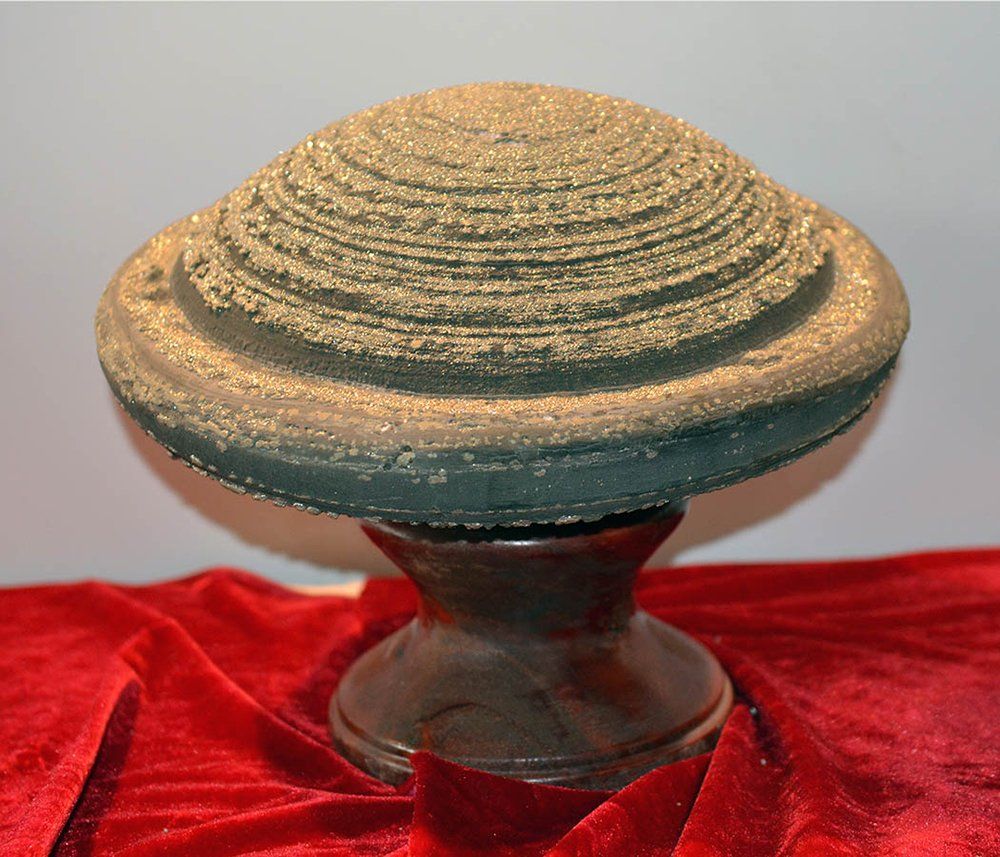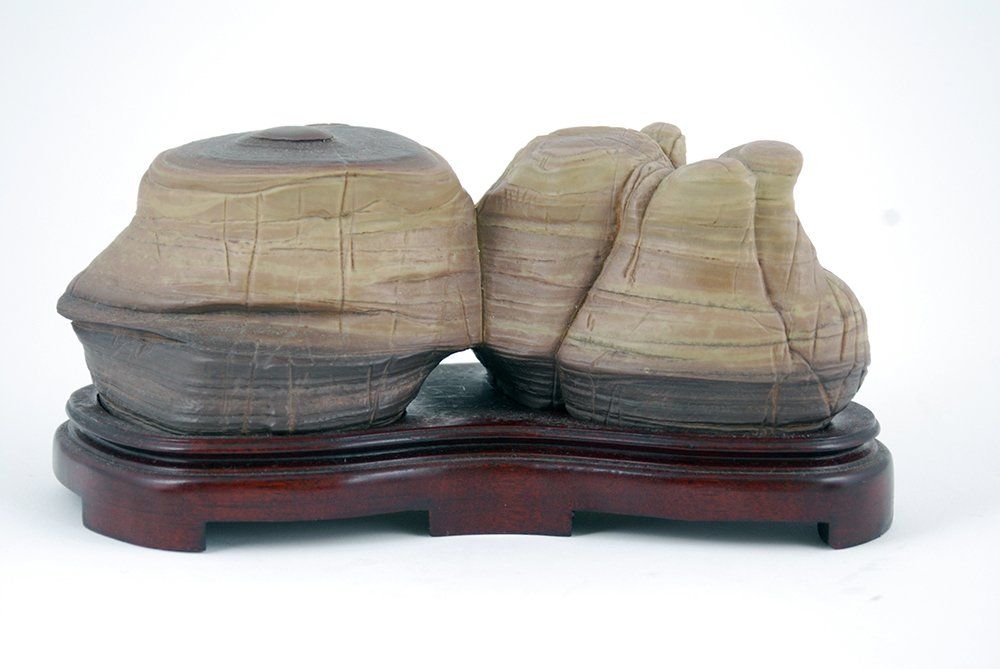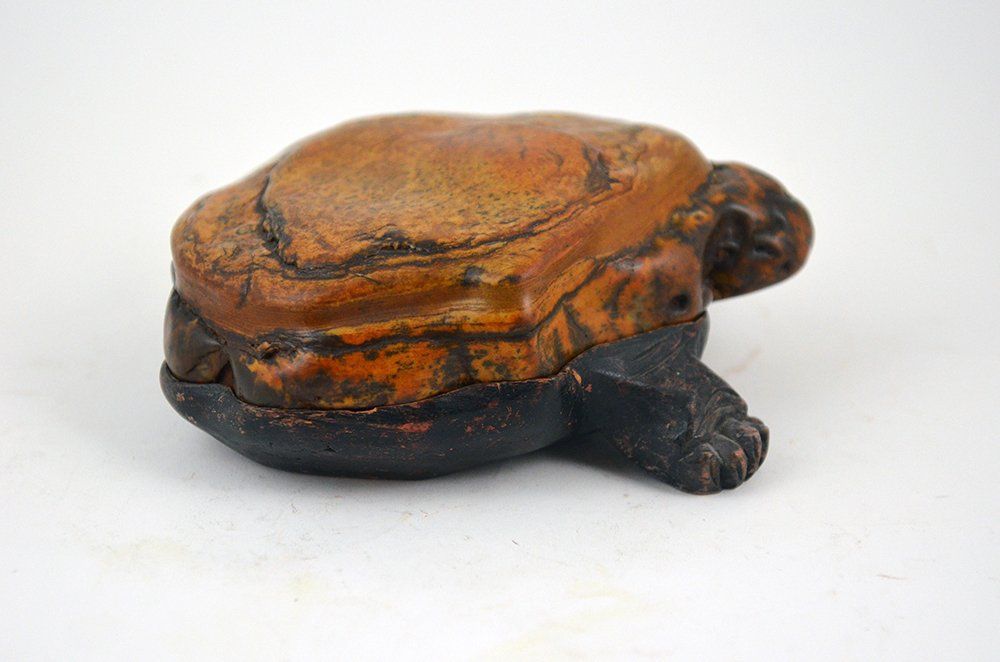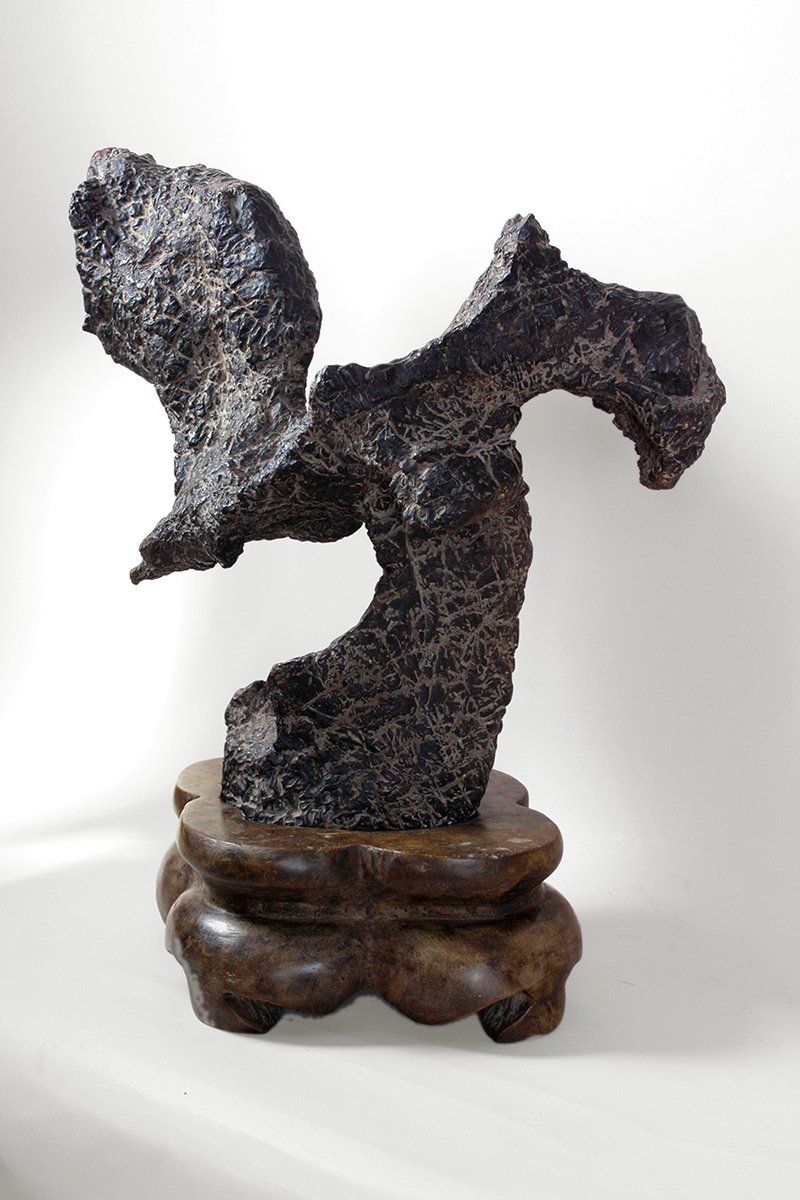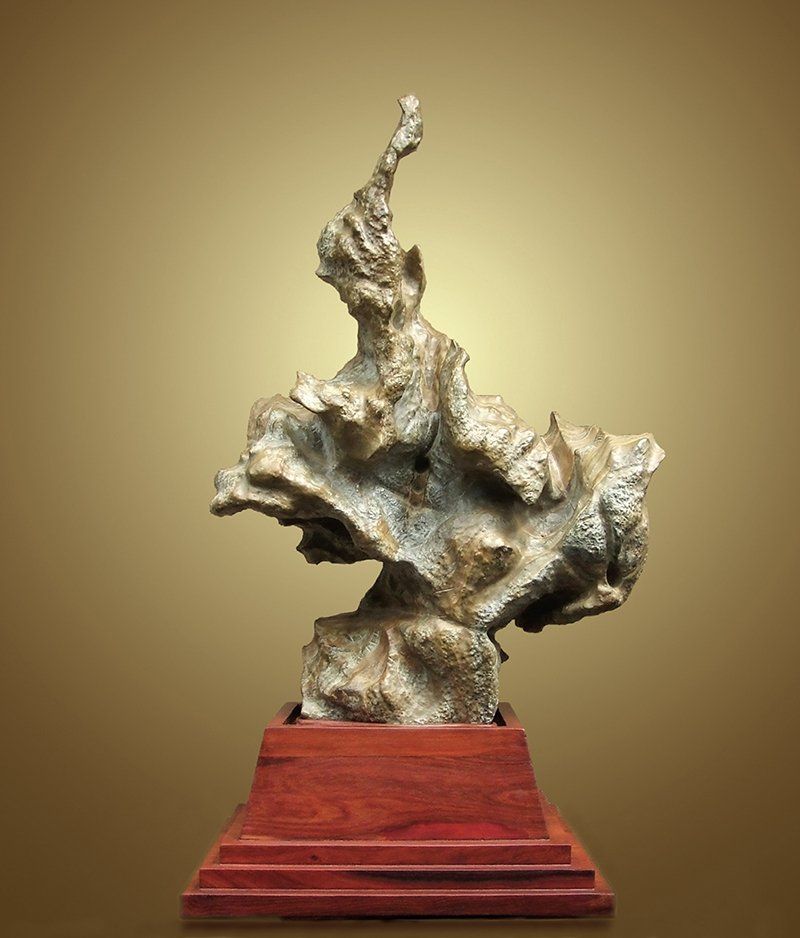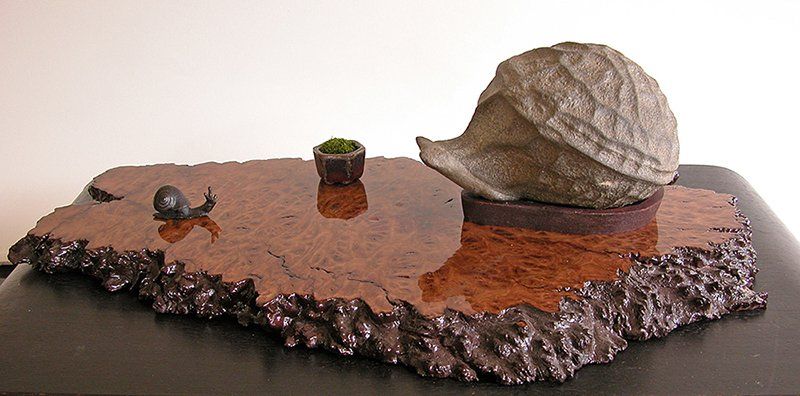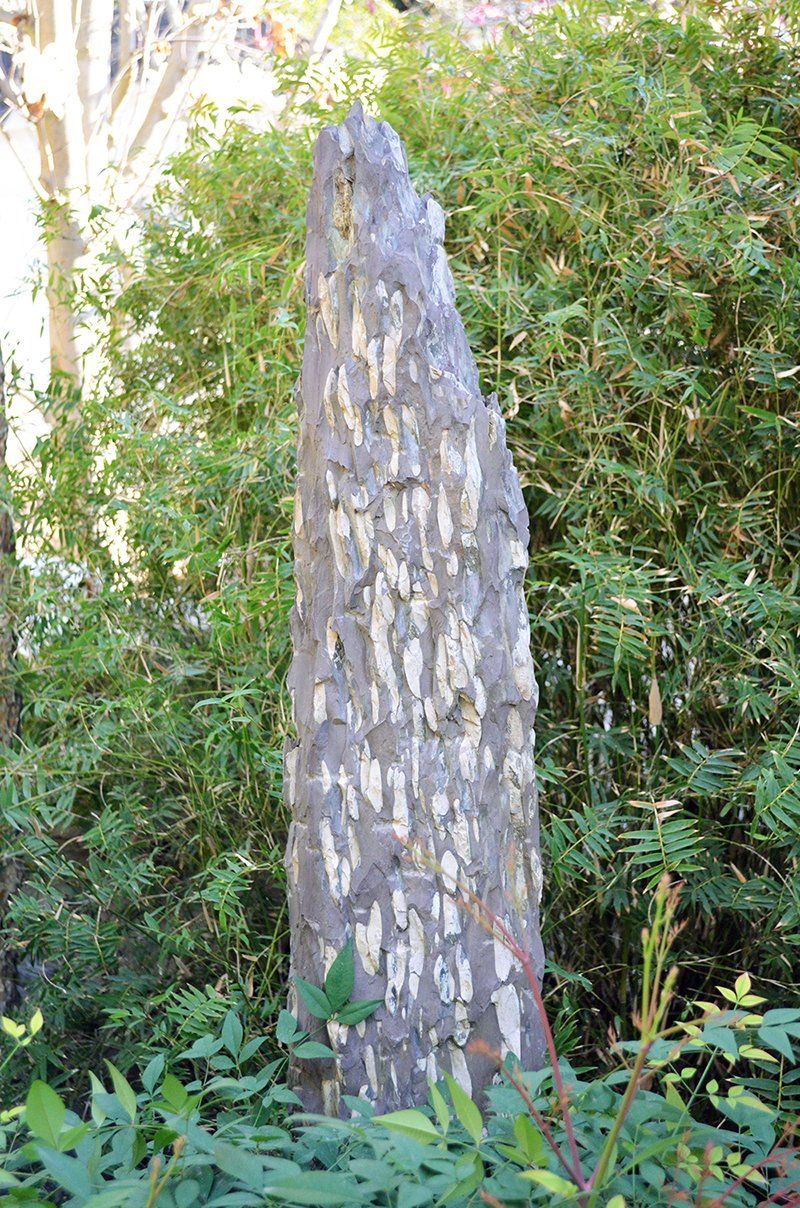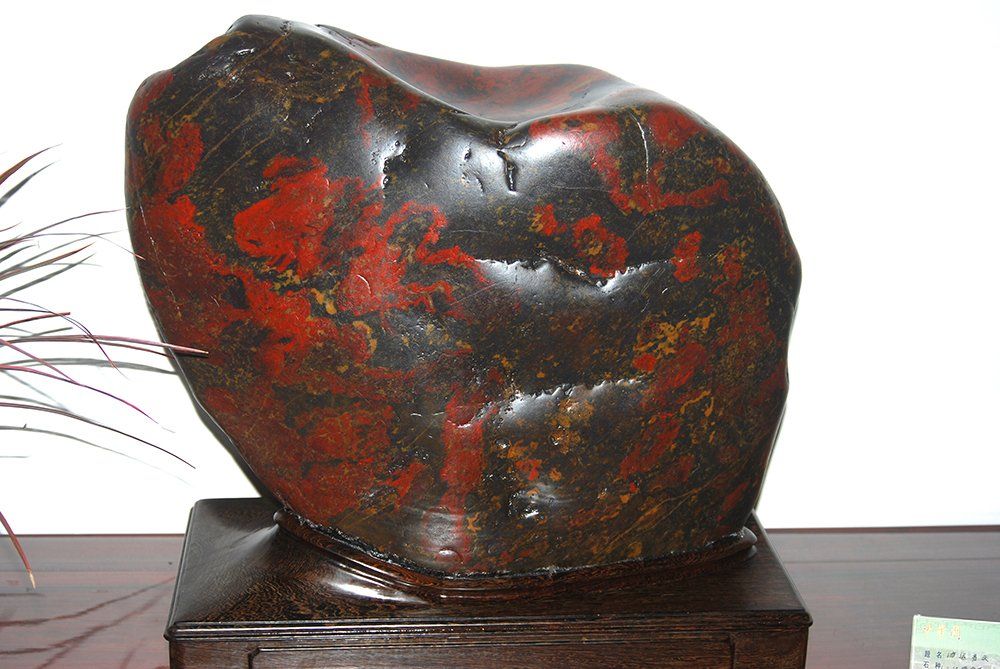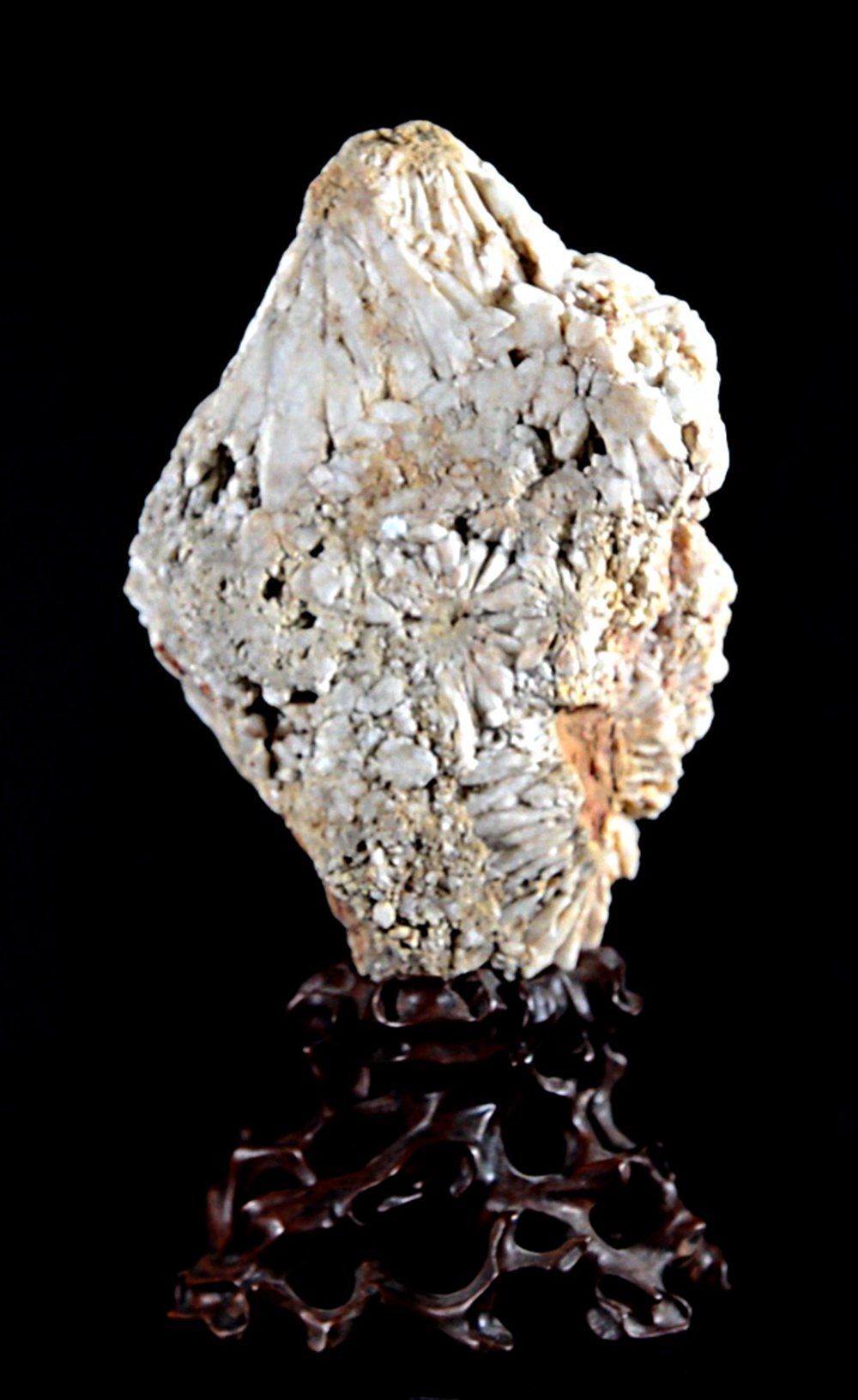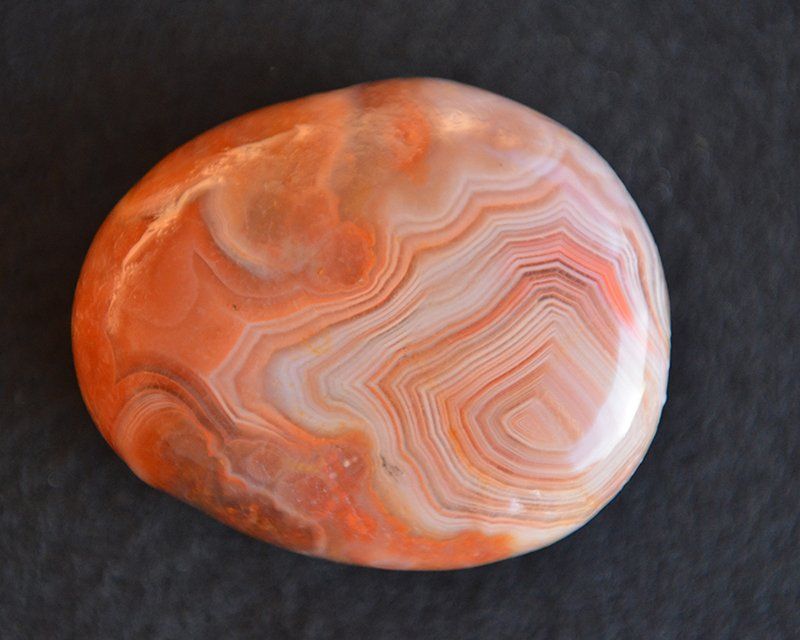Stone of the Month: September 2012 Iron Stones from Yunnan Province
Bamboo stones, the first of the garden stones featured in this column, are used almost exclusively in garden settings rather than as indoor viewing stones. They are often seen in courtyard landscapes in classical Chinese gardens both in China and in traditional gardens built in western countries. They are typically displayed with living bamboo because the narrow, upright shapes are reminiscence of bamboo stems. These linear stones usually range between one and four meters in length. Because of their size, bamboo stones are displayed outdoors with the base of the stone buried in the earth. Smaller-sized stones may be displayed in large granite bases or bowls. The surface texture may resemble pine tree bark with the color varying from pale green to gray with shades of yellow and white irregular patches.
It is difficult to determine when these stones were first used in gardens; but there is pictographic evidence placing their use in the Qing dynasty. Jiao Bingzhen, a Qing dynasty artist, made a series of twelve paintings titled “Virtuous Empresses of Past Dynasties.” One of those paintings depicting the Empress Dowager Ma of the Eastern Han dynasty, and featured prominently in the center of the painting is a bamboo stone. We believe that Jiao was using a Qing dynasty garden setting as a model when making this painting because there is a lack of further evidence that these stones were used in garden settings at that time. It wasn’t until much later in the Ming dynasty that large irregularly shaped stones were prominently used in gardens.
According to Dr. Wen Qingbo, VSANA advisor and Associate Professor of Geology, these stones are a nodular limestone composed of clay and calcite. They originated long ago during the ancient Ordovician period. Bamboo stones are excavated from the Yanwashan Mountains in Zhejiang Province.
-
February 2012
ButtonLingbi Stone from Anhui Province
-
March 2012
ButtonSonghua (Pine Flower) Stone
-
April 2012
ButtonDahua Stones from Guangxi Province
-
May 2012
Button"Mountains All in Sight" Wen Stone
-
June 2012
Button"Heritage" Lingbi Stone from Anhui Province
-
July 2012
ButtonYadan Stone "The Snail"
-
August 2012
ButtonBamboo Stones from Zhejiang Province
-
September 2012
ButtonIron Stones from Yunnan Province
-
October 2012
ButtonSanjiang Stones (Three Rivers Stones)
-
November 2012
ButtonHuadu Chrysanthemum Stone
-
December 2012
ButtonRain Flower Stone

